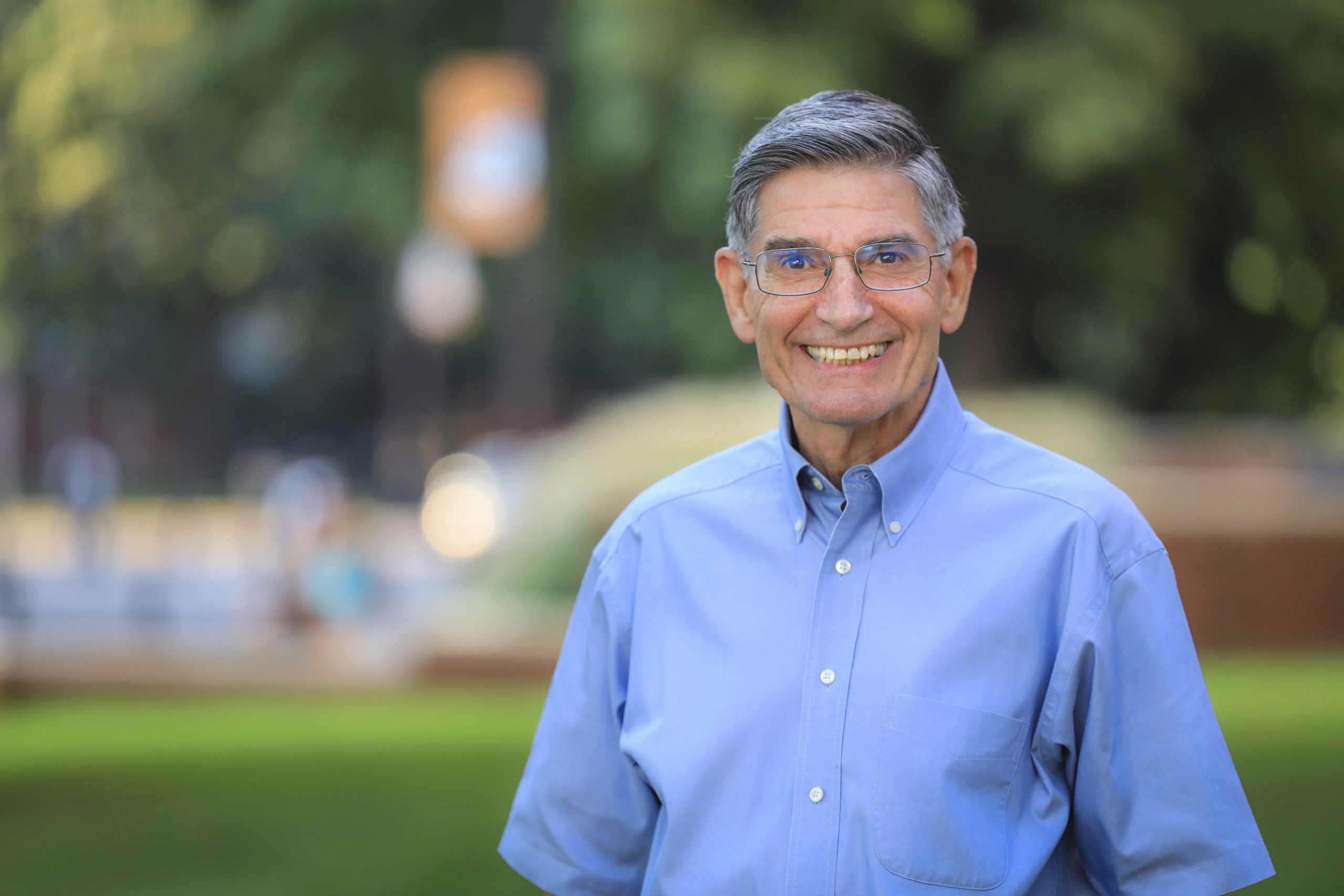OSU’s Kim Anderson retires after 42 years

Kim Anderson, Oklahoma State University Extension grain market economist, retired July 31. Anderson, who grew up on a dairy in Muscogee, Oklahoma, accepted a job at OSU in crop marketing in 1982. He has been a member of OSU Extension ever since, providing grain marketing advice to farmers across Oklahoma.
Over his career, Anderson said he has written tens of thousands of Extension articles and columns about grain merchandizing. He has spoken at conferences, workshops and other agricultural events. Anderson said some of the highlights of his career have been the television and radios interviews he has participated in for Fox News, Oklahoma City and Tulsa television stations, National Public Radio, Good Morning America and NHK World Japan (Japanese Public Broadcasting). He was also well-known for his reports on SUNUP, Oklahoma’s agricultural television network. He said he will miss being quoted in newspapers and giving interviews on TV and radio stations.
In addition to his Extension work, Anderson was also a professor in the OSU Ferguson College of Agriculture, where he taught a popular agriculture sales course starting in 2001. Every student in the college of agriculture is required to take the class, which Anderson said is more about learning to sell yourself with confidence and build relationships than it is about selling a product or service.
“For every hour in-state students are in class, they pay $45, and for out-of-state students it’s about $90,” Anderson said. “It was my responsibility that every time they walked out of the classroom, they had improved their earning potential by that much.
Anderson’s path to career success was not planned out in advance, but instead happened organically. Anderson said he originally wanted to become an engineer, but he ended up getting drafted and joining the Navy. He held a series of different jobs before landing his longtime position at OSU. As he enters retirement, Anderson plans to continue this philosophy without worrying about what the future holds.
“Whatever opportunity comes up, select the best one to fit your talents and wants, give 110%, and it’s going to turn out just fine,” Anderson said.
Changes in grain marketing
Not surprisingly, Anderson’s views of grain marketing have evolved over his 42 years in Extension. Between droughts, wars, new markets, price volatility, embargoes and shifts in imports and exports of grain, Anderson has experienced many highs and lows in commodity markets. He chuckled when thinking back to his initial mindset when he began his career.
“My goal was to stamp out ignorance in marketing,” Anderson said.
He said a turning point for him was when he realized how much he could learn about grain marketing from successful farmers. Some research on Anderson’s part showed him that farmers were doing a relatively good job of marketing at that point in time. After analyzing nine years of Oklahoma grain elevator data, he began to get a deeper understanding of how farmers were selling their commodities, which helped him give them more useful advice.
“The general belief in the ag industry was that the majority of farmers sold in the bottom half of the market,” Anderson said. “It turned out about 70% of the farmers were selling in the upper third of the market, not in the bottom half.”
When asked how grain merchandising has changed since 1982, Anderson said the major differences are price seasonality, more data and that farmers are marketing on a more global level than they were 40 years ago.
What will the future hold?
One lesson he has learned since his career began is that humans cannot predict what markets will do in the future.
“From 1982 to 1987, we predicted prices and gave outlook presentations,” Anderson said. “In 1988, I did research that basically said nobody could predict price, and if you can’t predict price, you can’t really give advice on when to sell. Farmers should do what makes them comfortable and what lets them sleep at night.”
He said there are trends, and they can change the odds, but the top and bottom prices for the future are a mystery. His best advice to farmers is to avoid selling all at once because tomorrow is unknown.
“Every day, there’s a 50% chance prices are going to go up the next day and a 50% chance they’re going to go down,” Anderson said. “Producers should know their costs and produce a quality product with above average yields that the market wants to buy. You don’t market what you produce. You market land, labor, capital and management. That’s what you can control. You market them through a commodity, and you sell the commodity.”
Anderson says marketing can be simple. He recommends farmers pay attention to the price cycles and come up with a mechanical strategy while using set price targets.
“Marketing is hard if you try to fight prices or predict them,” he said. “Make it as easy as possible, because you’re not going to fight the markets and win.”
Although Anderson said he looks forward to weeks that consist of six Saturdays and a Sunday, it is the end of an era for him and the farmers and ranchers of Oklahoma who have asked his advice for more than four decades.
“I think of agriculture as a team,” Anderson said. “I don’t think there’s anyone in this industry who does something just by their own knowledge and skills. They rely on others. When you’re part of the team, it’s just indescribable. The pleasure I get out of working with people and helping them succeed is the thing I’ll miss the most.”
Lacey Vilhauer can be reached at 620-227-1871 or [email protected].



